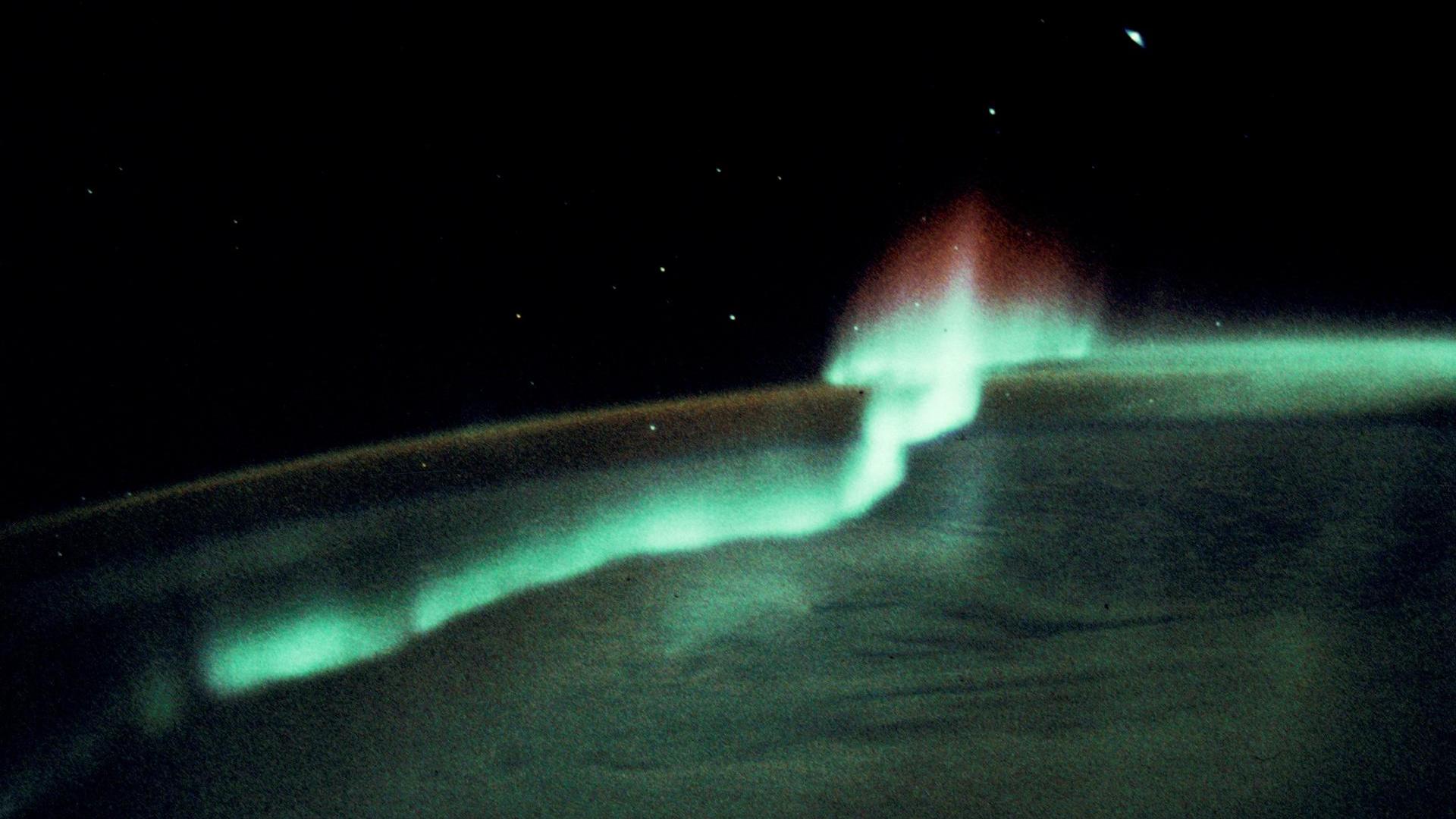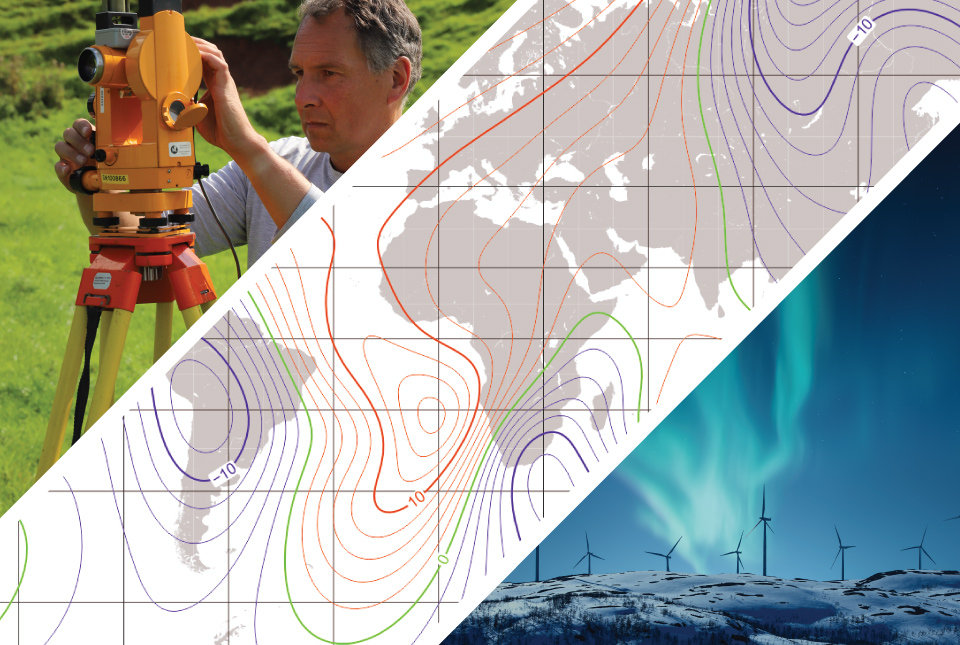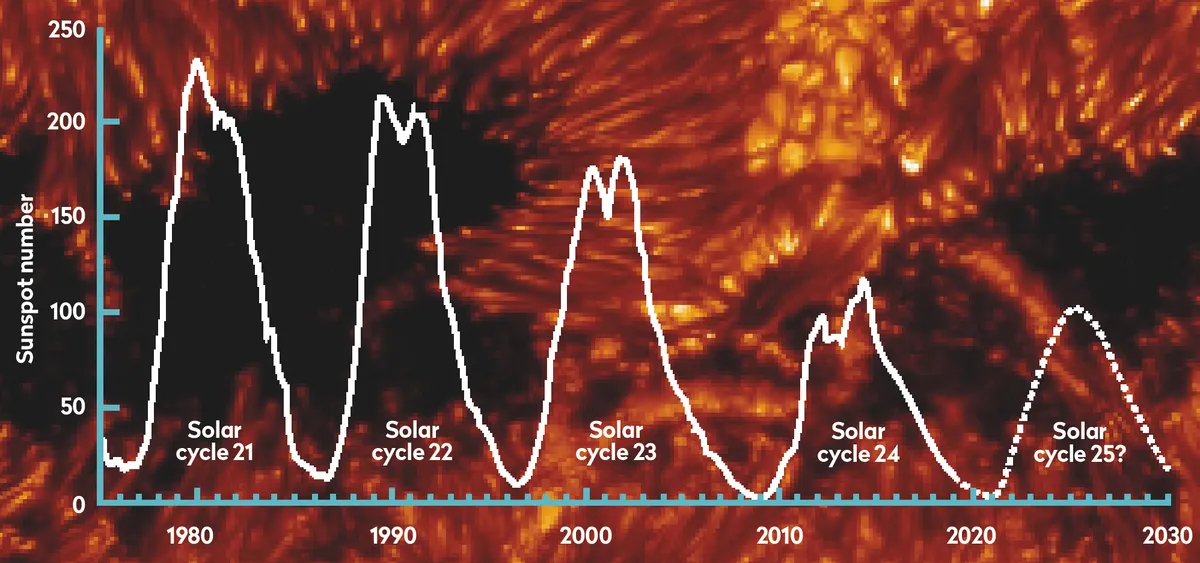Space Weather

Aurora
An aurora is a natural light display predominantly seen in high-latitude regions, resulting from the interaction between solar wind particles and Earth's magnetic field.

Geomagnetism
Geomagnetism is the branch of geophysics that investigates Earth’s magnetic field, its origins in the planet’s core, its spatial structure, and its variations over timescales from seconds to millions of years. The discipline spans internal field generation by the geodynamo, crustal magnetization, and external sources in the ionosphere and magnetosphere, with applications in navigation, resource exploration, and space-weather hazard mitigation.
Ionosphere
The ionosphere is the ionized region of Earth’s upper atmosphere where solar extreme ultraviolet and X‑ray radiation create a plasma of electrons and ions, strongly influencing the propagation of radio waves and satellite navigation signals. Extending roughly from 80 to over 600 km in altitude, it exhibits layered structure, strong diurnal and seasonal variability, and sensitivity to solar activity and geomagnetic storms.

Solar cycle
The solar cycle is the approximately 11-year periodic modulation of the Sun’s magnetic activity, observed most directly through the rise and fall of sunspot numbers and associated phenomena such as solar flares and coronal mass ejections. Its magnetic polarity reverses every ~22 years (the Hale cycle), shaping variability throughout the heliosphere and influencing space weather conditions at Earth.

Solar flare
A solar flare is a sudden, intense burst of electromagnetic radiation from the Sun caused by the rapid release of magnetic energy in active regions near sunspots. Flares emit across the spectrum from radio waves to gamma rays, occur on timescales of minutes to hours, and can disrupt radio communications and affect spacecraft when directed toward Earth.

Solar wind
The solar wind is a continuous outflow of ionized gas from the Sun’s corona that permeates the Solar System, carrying the Sun’s magnetic field and shaping the heliosphere. It varies between slower and faster streams, interacts with planetary magnetospheres and atmospheres, and drives space weather phenomena such as geomagnetic storms and auroras.

Sun
The Sun is a G2V (G‑type main‑sequence) star at the center of the Solar System whose gravity, radiation, and magnetic activity dominate the heliosphere. It contains about 99.8% of the Solar System’s mass, converts hydrogen to helium by nuclear fusion in its core, and powers Earth’s climate and space weather. Its basic reference properties are standardized by the International Astronomical Union, including a nominal radius of 695,700 km, luminosity of 3.828×10^26 W, and effective temperature of 5772 K.

Van Allen radiation belts
The Van Allen radiation belts are toroidal zones of energetic charged particles trapped by Earth’s magnetic field. Discovered in 1958 using data from the U.S. satellite Explorer 1, they comprise a relatively stable inner belt dominated by protons and a highly variable outer belt dominated by electrons, with occasional transient additional belts during strong space‑weather events. These belts affect spacecraft design and operations and remain a central subject in space physics and space weather research.